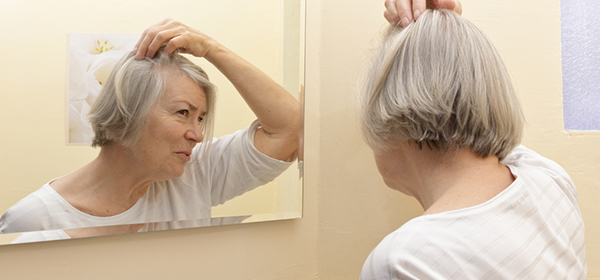Benjamin Franklin said there were only two certainties in life – death and taxes. Given he suffered from a receding hairline, perhaps he should have added a third – hair loss.
The simple fact is that everyone will experience some degree of hair loss as they get older. The only uncertainties are how much and when.
And everyone will accept it differently. Some go with the flow, others kick and scream and throw time and money at what they perceive to be a catastrophe.
They shouldn’t. It’s incredibly common. In fact, about a quarter of all men begin to go bald by the time they’re 30 and about 75 per cent are either bald or have signs of baldness by the age of 60.
Hairs are tiny shafts of a protein called keratin and are tied together in a group of specialised cells called hair follicles. These supply nutrients to the root of the hair.
There are no follicles on the palm of the hand, the lips or soles of the feet. In a number of other places they don’t grow long enough to appear from the pore. In other areas, such as the head, armpits and chest, they do.
A scalp usually contains about 100,000 hair follicles and will lose between 50 and 300 hairs each day.
In men, it’s the loss of these hairs, and their non-, or slow, replacement that results in issues related to balding. This starts at the side of the head above the temples, and at the crown, and spreads from there.
This process is called ‘pattern baldness’ and is the most common form of baldness, affecting about half of all males by the age of 50 and more than 80 per cent by the age of 80.
Hereditary links are often blamed for hair loss and it’s true that men with bald fathers are more likely to develop male pattern baldness than those who don’t.
Hereditary links are slightly more dominant in women.
Men are also told to look at their mother’s father. This is because the most influential hair loss gene is carried on the X chromosome which a male can only get from his mother and which could have been passed on by her father.
In truth, both male and female pattern baldness can be inherited from either side of the family. And baldness doesn’t skip a generation, as we are sometimes told.
There are, however, many other causes: stress, too much vitamin A, an iron deficiency, lack of protein, unhealthy weight loss and an underactive thyroid.
Hereditary causes are impossible to prevent, though can be slowed, but you’ll need to see a dermatologist or hair expert for advice.
Drugs may be prescribed but be sure to ask about any side effects. If hair loss is severe – and you’re unhappy and have cash to spare – transplant surgery may be an option.
In summary, there are many reasons as to why men and women suffer hair loss, and just as many things that can be done about it – things that may be as simple as not using a hairdryer and not brushing your hair aggressively backwards.
Some will work, and some will never work as long as your head is pointing skyward. Whichever course of action you decide on, do it gracefully. You have a lot of friends.
Have you experienced hair loss? What was your reaction? Do you have a magic formula that worked for you?
Related articles:
Hair loss in women
How much loss is normal?
Can thinning hair be reversed?
Health disclaimer: This article contains general information about health issues and is not advice. For health advice, consult your medical practitioner.

